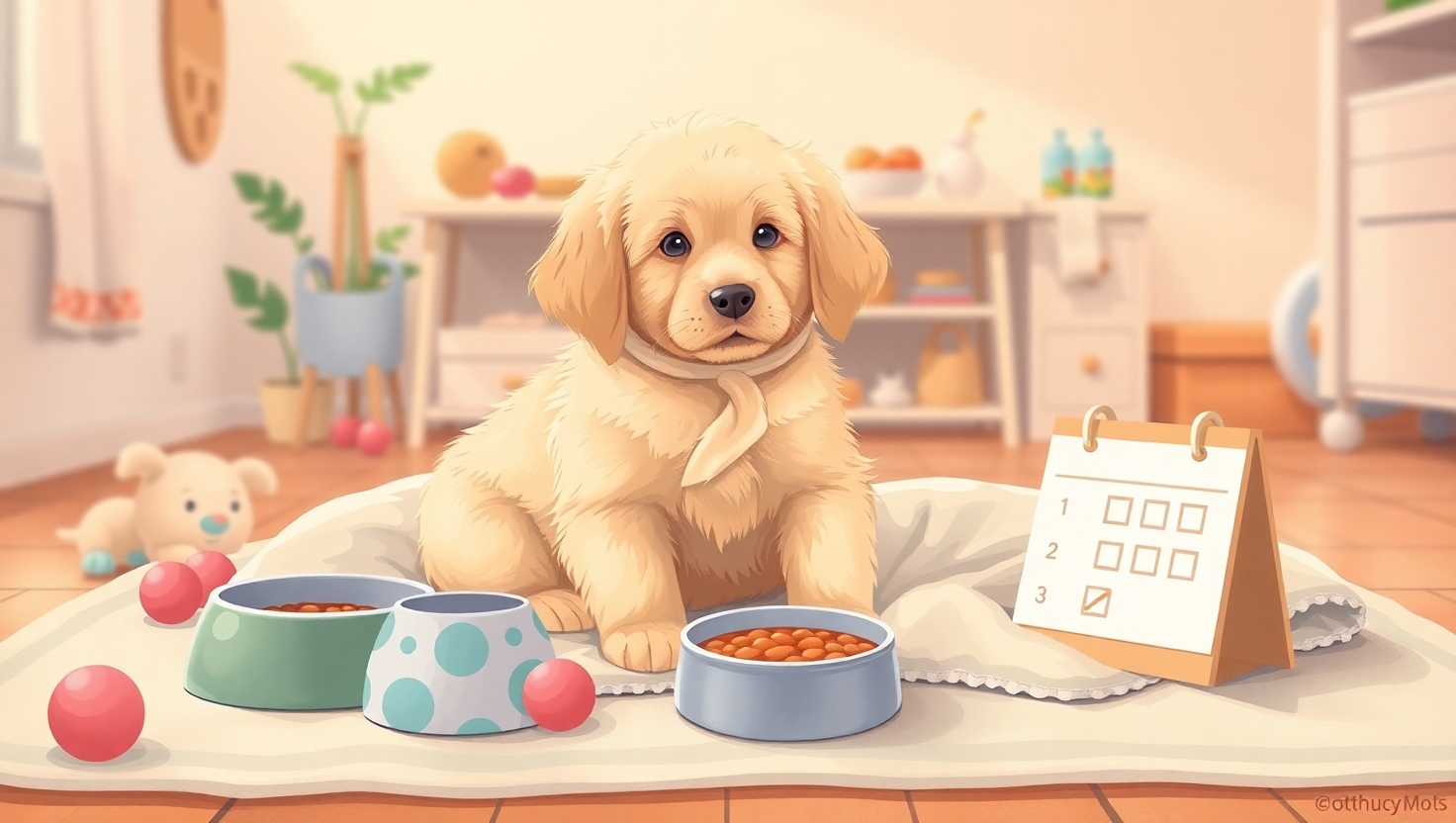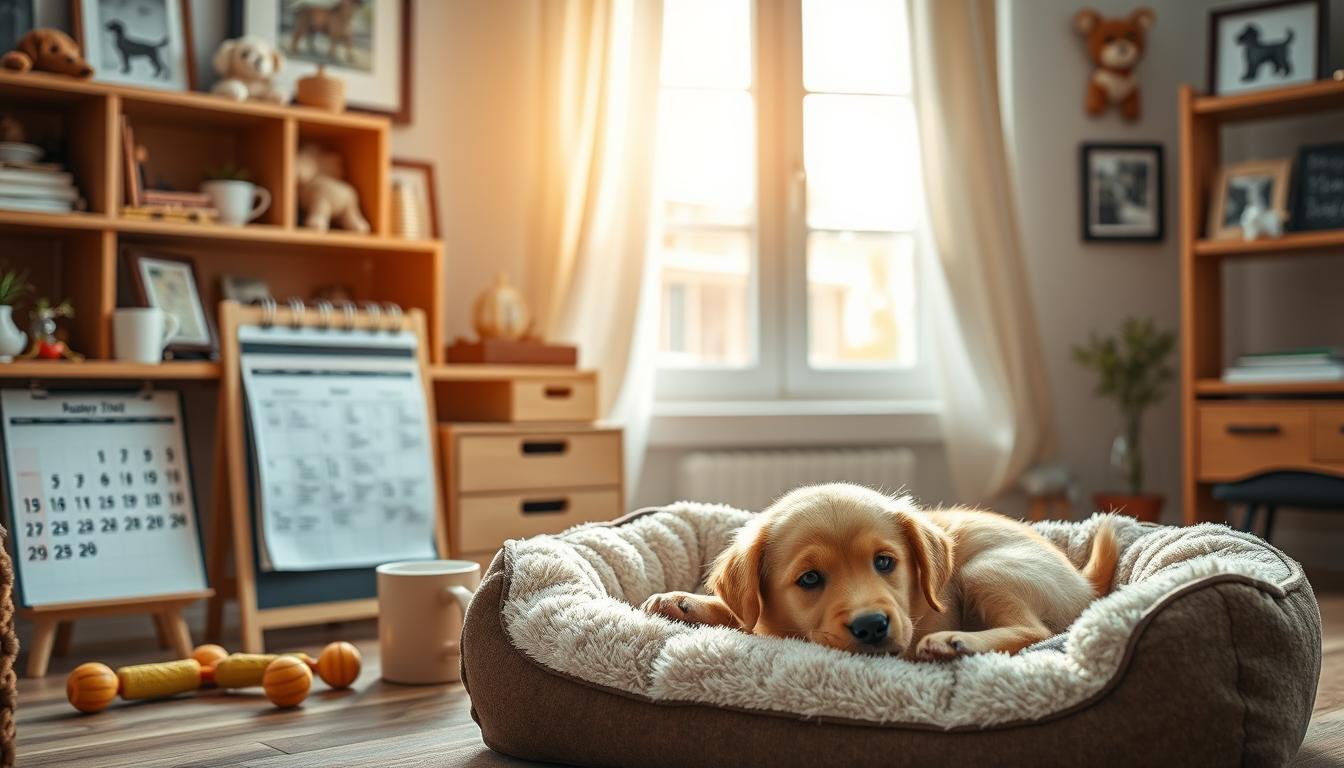
Bringing home a furry companion is one of life’s most joyful adventures. Those tiny paws and curious eyes quickly steal hearts, but caring for a young dog requires thoughtful planning. A structured approach helps create stability during this transitional phase, ensuring your pet feels safe while learning household rules.
Preparation is essential for success. From setting up a cozy sleeping area to stocking up on chew toys, small steps make a big difference. Consistency in daily habits—like meal times and bathroom breaks—builds trust and accelerates training progress. This foundation turns potential chaos into cherished memories.
New pet parents should anticipate dedicating significant time to their furry friend. Young dogs need regular attention for socialization, exercise, and health monitoring. Balancing these needs with your lifestyle ensures a smooth adjustment period for everyone involved.
This guide offers practical strategies tailored to your pup’s developmental stage. You’ll discover tips for establishing routines, managing behavior, and fostering a strong bond. While every dog has unique quirks, these methods adapt to support their growth and confidence.
Key Takeaways
- Structure helps young dogs feel secure and accelerates learning
- Consistent routines simplify feeding, training, and potty habits
- Early socialization shapes lifelong behavior patterns
- Patience during the adjustment period benefits both pet and owner
- Customizable strategies accommodate individual personalities
Setting the Foundation: Why a Routine Matters
Consistency isn’t just helpful—it’s the cornerstone of your pet’s early development. Young dogs experience sensory overload in unfamiliar environments, making predictable patterns their anchor. Structured routines transform chaos into calm by answering three core questions: When do we eat? Where do we rest? How do we play?
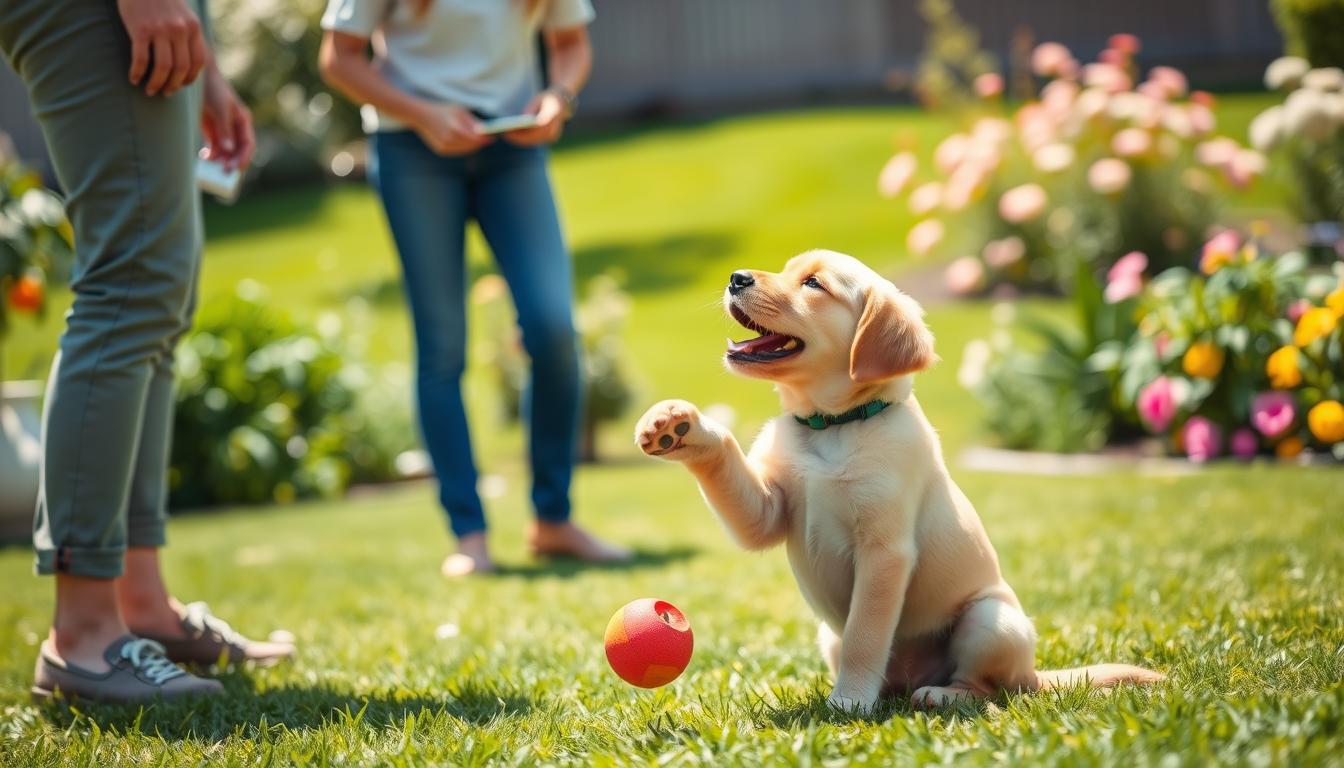
Benefits for Your Puppy’s Development
Transitioning from littermates to a solo life shakes a young dog’s world. Regular feeding times and bathroom breaks act like a biological clock, reducing stress spikes. Studies show predictable schedules improve sleep quality by 40% in growing pets, directly impacting cognitive growth.
House training accelerates when outings align with natural rhythms. Tiny bladders need frequent relief—structured intervals prevent accidents while building trust. This reliability teaches pups to communicate needs instead of acting out.
Enhancing the Pet Parent Experience
Clear patterns turn guesswork into confidence. Families gain:
- Predictable bonding moments during play sessions
- Fewer midnight wake-up calls as sleep habits stabilize
- Shared care responsibilities that teach kids accountability
One owner shares: “Knowing our 10 AM walk time lets me plan work breaks—it’s become our favorite meeting.” This mutual understanding deepens connections while simplifying daily logistics.
Establishing the Essentials of an 8-Week Puppy Schedule
Creating rhythm in your young dog’s day starts with understanding their natural patterns. Tiny bodies grow rapidly, requiring fuel, movement, and downtime in balanced cycles. Like puzzle pieces, these elements lock together to form a complete picture of wellness.
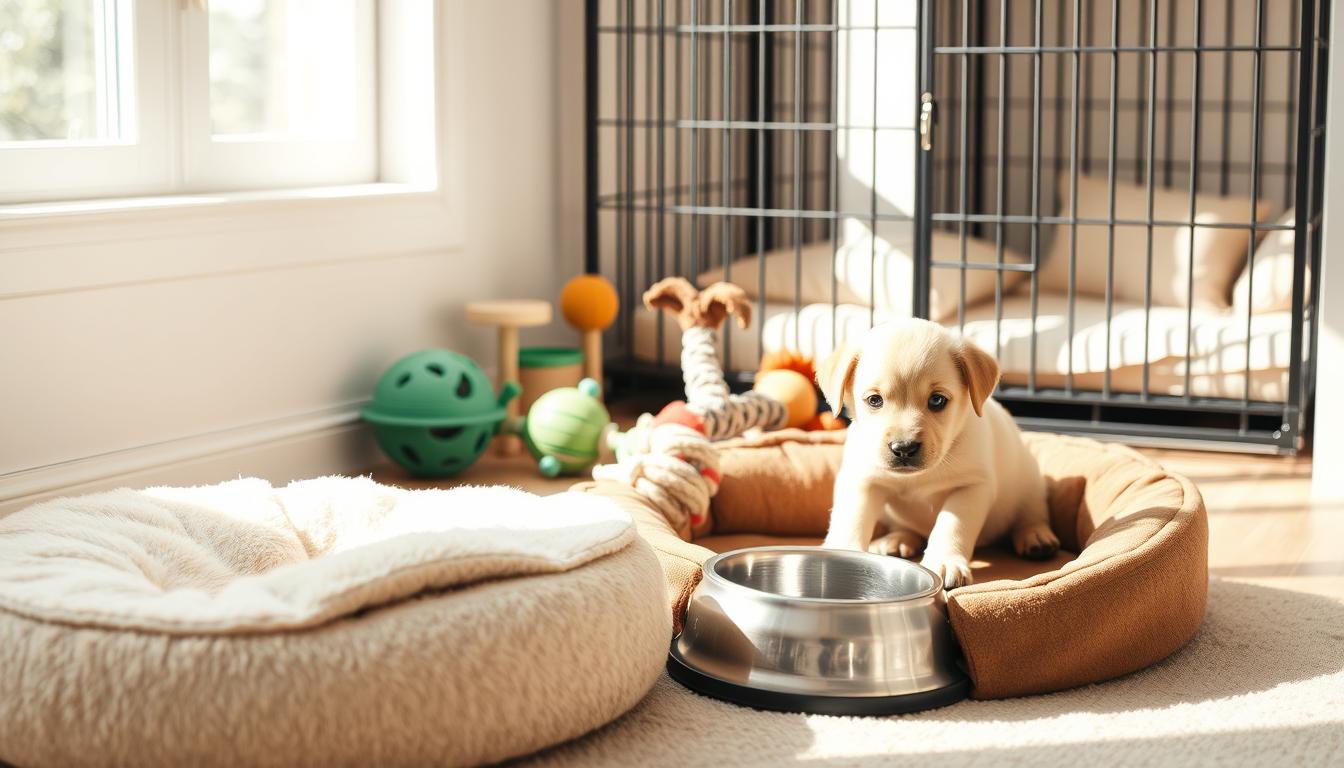
Four Pillars of Growth
Every thriving pet needs four anchors:
- Nutrition: Serve meals at identical times to regulate digestion
- Bathroom breaks: Offer potty opportunities every 90 minutes
- Active play: Use short bursts to build coordination
- Quiet rest: Provide cozy spaces for 16+ hours of sleep
Watch for yawns or slowed movements—these signal nap needs. One owner notes: “Our golden mix would get cranky until we added afternoon quiet hours.”
Crafting Predictable Patterns
Blend your pet’s needs with household flow using this guide:
| Activity | Frequency | Duration |
|---|---|---|
| Meals | 3x daily | 15 minutes |
| Potty trips | 8-10x daily | 5 minutes |
| Play sessions | 4-5x daily | 10-15 minutes |
| Naps | After each activity | 1-2 hours |
Working families can stagger care tasks—morning walks before commutes, evening training during dinner prep. Multi-pet homes might separate play areas to prevent overexcitement.
Stay adaptable. If your furry friend resists naptime, try calming music. Missed a potty break? Clean calmly and reset. Consistency matters most over weeks, not hours.
Puppy schedule 8 weeks
Building a predictable day starts with aligning your pup’s needs with your household rhythm. Young dogs flourish when they know what to expect, reducing anxiety and accidents. This blueprint balances nourishment, education, and rest in cycles that support rapid growth.
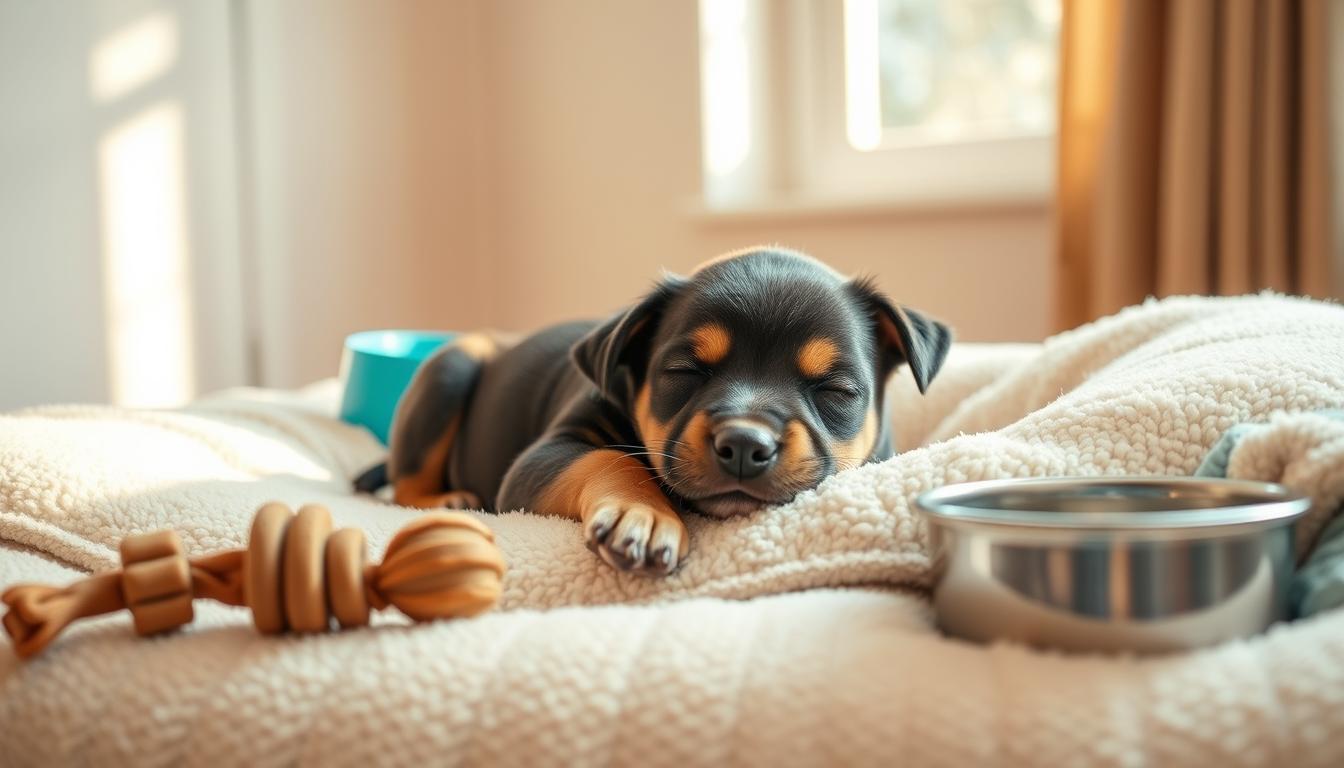
Designing a Daily Blueprint for Success
Mornings set the tone. Begin with a potty trip immediately after waking—tiny bladders can’t wait. Follow with breakfast and another bathroom break within 15 minutes. These back-to-back routines teach your furry friend that meals signal relief opportunities.
Midday mixes learning with downtime. After a short play session, introduce a 5-minute training window. Focus on simple commands like “sit” or name recognition. End with a calm cuddle before naptime to prevent overstimulation.
Evenings gradually lower energy levels. Post-dinner play should involve gentle games like tug-of-war, avoiding rowdy antics. A final potty break at 9:15 PM pairs with bedtime, creating a clear “lights out” signal. Pro tip: Dim household lights an hour earlier to encourage drowsiness.
Nighttime breaks depend on bladder maturity. Set alarms every 3-4 hours initially, adjusting as your pet grows. If accidents occur, avoid scolding—clean thoroughly to remove scent markers. One owner shared: “Using a flashlight for midnight trips helped our pup learn where to go quickly.”
Adapt this framework to your life by shifting time blocks, not skipping essentials. Early risers might move playtime to dawn, while night owls could extend evening bonding. Consistency in activity order matters more than clock precision.
Mastering Puppy Potty Training
Successfully guiding your young dog through this milestone requires equal parts observation and celebration. Tiny bodies operate on fast-moving biological rhythms—understanding these patterns transforms frustration into progress.
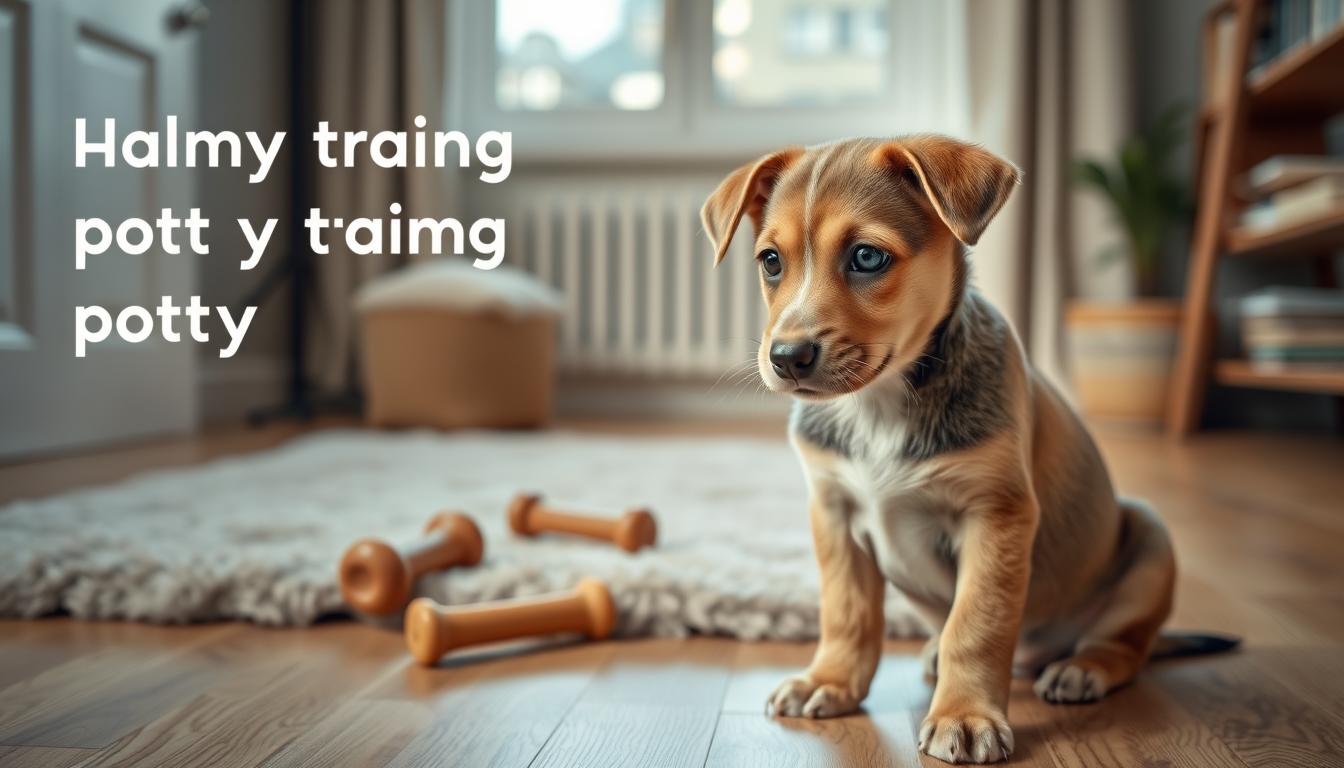
Recognizing Your Puppy’s Signals
Young dogs broadcast their needs through subtle body language. Sniffing floors intensely or pacing in circles often means “I need to go—now!” Whimpers near doors or sudden pauses during play also signal urgency. Track these moments:
- Within 15 minutes of eating or drinking
- After waking from naps
- Following energetic play sessions
One owner shares: “We kept a logbook and spotted patterns—our lab mix always needed a break 8 minutes after breakfast.” This awareness helps prevent accidents before they happen.
Implementing Positive Reinforcement Techniques
Celebrate every outdoor success instantly. Offer a treat within 3 seconds of elimination paired with a cheerful phrase like “Good potty!” This creates clear cause-and-effect learning. Avoid scolding for indoor mishaps—it confuses pets and slows progress.
For accidents, clean with enzymatic sprays to erase scent trails. Then, gently redirect to the designated bathroom area. If struggles persist, consult your vet to rule out health issues like UTIs.
Remember: Consistency beats perfection. Missed a potty break? Simply reset. Over time, your furry friend will learn to trust the routine—and you’ll gain a housetrained companion.
Effective Crate Training Strategies
A well-designed crate becomes your furry friend’s personal retreat—a place where safety meets comfort. This method taps into dogs’ natural denning instincts, transforming confinement into contentment when approached thoughtfully.
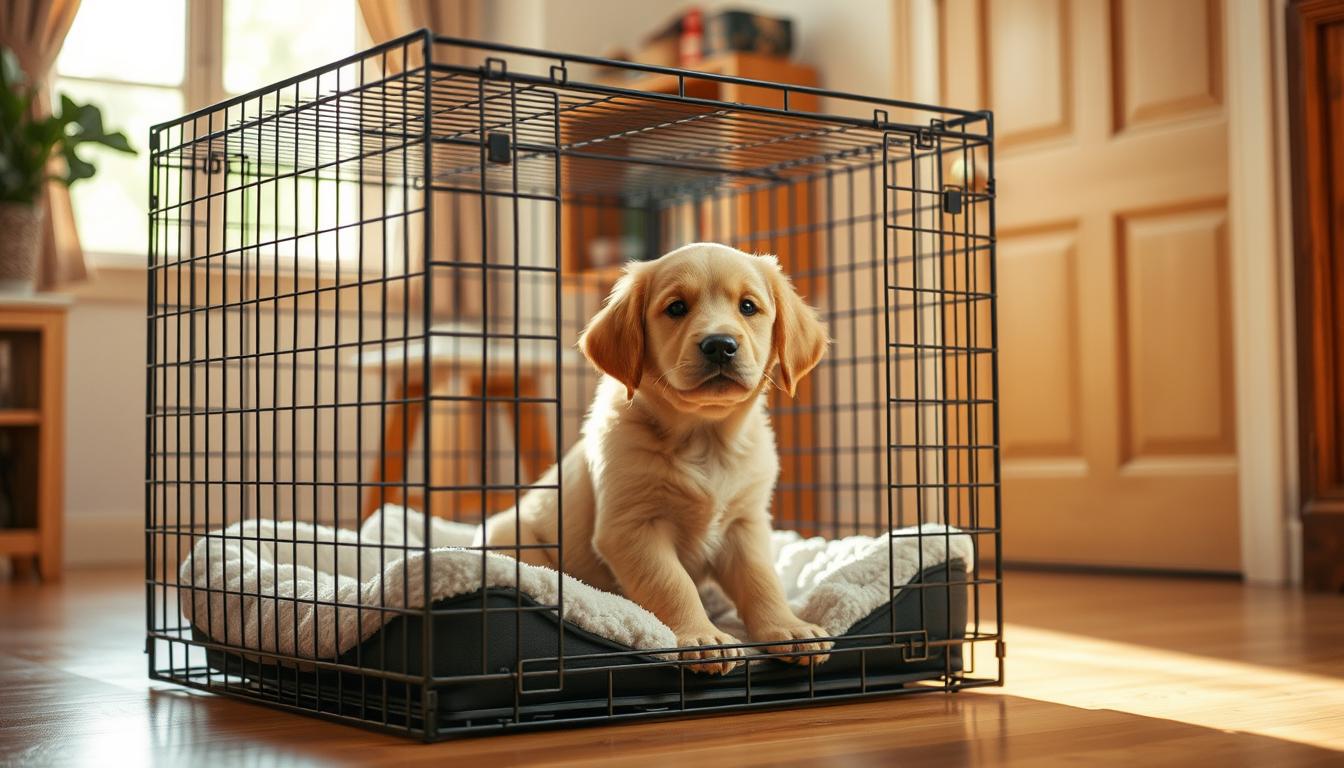
Creating a Cozy and Inviting Space
Choose a crate that allows standing and turning but doesn’t leave room for accidents. Wire crates with dividers adapt as your pet grows. Line the floor with machine-washable bedding and include a shirt that smells like you. Rotate safe chew toys to maintain interest without overwhelming.
Gradual Introduction to Crate Life
Start with door-open exploration during meals. Toss treats near the entrance, progressing to full meals inside. Close the door for 5-minute intervals while staying nearby, gradually increasing duration. “We practiced crate time during TV commercials—short positive exposures add up,” shares a Labrador owner.
Using Crate Time for Housebreaking
Young dogs instinctively avoid soiling their rest area. Use this natural tendency by scheduling crate sessions between potty breaks. Keep initial confinement under 2 hours for 8-week-olds, pairing crate exits with immediate outdoor trips.
| Activity | Frequency | Tips |
|---|---|---|
| Daytime crating | 1-2 hour sessions | Use after play/exercise |
| Nighttime crating | 3-4 hour stretches | Place near your bed |
| Training treats | Every entry | Use high-value rewards |
If whining occurs, wait for quiet moments before releasing. Consistency teaches calm behavior earns freedom. Remember—the crate should never feel like punishment, but rather a predictable safe space for recharging.
Crafting a Balanced Feeding Schedule
Proper nutrition fuels every wag and wiggle during these formative months. A thoughtful approach to nourishment supports healthy growth while reinforcing daily rhythms. Young pets thrive when their feeding routine aligns with other activities, creating harmony in their developing world.
Meal Timing and Portion Control
Serve three daily meals at consistent times to stabilize energy levels. Tiny stomachs fill quickly—measure portions using guidelines from your food brand, adjusting slightly if ribs become visible. Pair mealtimes with potty breaks, as digestion often triggers elimination needs.
Transition to two meals around six months for larger breeds, or up to a year for smaller ones. Watch for hunger cues like food-bowl lingering. “Our terrier started nudging his dish at 5 PM sharp—we knew it was time to adjust,” shares one owner.
Selecting the Right Puppy Food
Choose formulas labeled for growth stages or “all life stages.” Look for high-quality proteins like chicken or salmon as the first ingredient. Avoid fillers such as corn syrup or artificial colors.
Gradually mix new food with current options over seven days to prevent tummy troubles. Treats shouldn’t exceed 10% of daily calories—save them for training rewards or crate introductions. Always keep fresh water available, especially after playtime or naps.
FAQ’s
How often should I feed my 8-week-old puppy?
At this age, offer small meals 3–4 times daily to support growth and energy needs. Stick to high-quality kibble formulated for young dogs, and avoid overfeeding. Always provide fresh water.
What’s the best way to handle potty breaks during housebreaking?
Take your pup outside every 1–2 hours, especially after naps, meals, or playtime. Use consistent cues like “go potty” and reward success with praise or treats to reinforce good habits.
How long can a young dog stay in a crate during the day?
Limit crate time to 1–2 hours initially, gradually increasing as they adapt. Never leave them confined for more than 3–4 hours. Pair crate sessions with toys or calming items to create positive associations.
Why is socialization important at this stage?
Early exposure to sounds, people, and gentle interactions builds confidence and reduces fear. Introduce new experiences slowly, ensuring they’re positive and stress-free for healthy behavioral development.
How do I manage accidents without discouraging my pup?
Stay calm—avoid scolding. Clean accidents thoroughly with enzymatic cleaners to remove odors. Redirect attention to outdoor potty areas and celebrate successes to encourage repetition.
What type of toys are safest for teething puppies?
Opt for durable rubber chews or soft plush toys designed for young dogs. Avoid small parts that could be swallowed. Rotate options weekly to keep playtime engaging.
Should I adjust nighttime routines for better sleep?
Yes! Reduce water intake 1–2 hours before bed and take a final potty break. Use a cozy crate near your bedroom to ease anxiety and establish a calming pre-sleep ritual.
Also Read:


